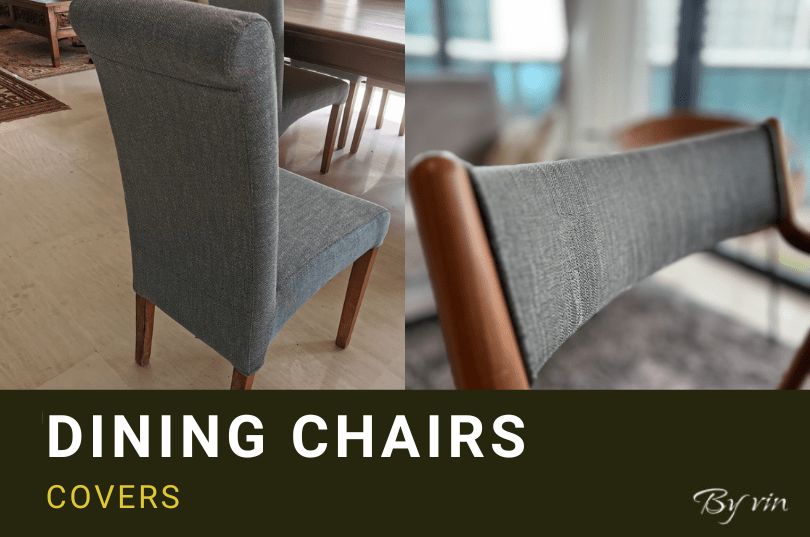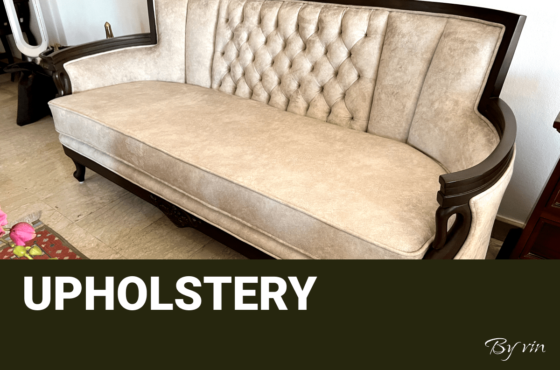Dining Chair Covers: Types of Fabrics

Many home decorators may not prioritize selecting fabric for dining chair covers. However, this decision holds significant importance as it greatly impacts the visual appeal and functionality of dining spaces. Factors such as the fabric’s durability, ease of cleaning, and its ability to complement the chosen style should be carefully considered for this reason.
This blog aims to encourage readers to make an appropriate decision when it comes to selecting Dining chair upholstery. This decision should consider individual home conditions and requirements, ensuring that the chairs seamlessly blend into the room’s ambiance while satisfying the lifestyle needs of the owners.
Types of Fabrics
Let us address the specific types of fabrics suitable for the dining chair covers and their unique characteristics in more detail so that you can choose what to sacrifice – beauty or durability. Firstly, consider:
- Cotton: This particular fabric type is among the most prevalent, and for valid reasons. It is celebrated for its breathability, soft texture, and reasonable cost. Its exceptional dye absorption capabilities allow for customization in any desired color to complement both the chair and the dining room’s design. Additionally, cotton’s softness enhances the comfort of dining experiences when used as covers.
- Linen: Linen stands as one of the oldest fabric varieties and is particularly well-suited for formal dining spaces. Its substantial thickness ensures firm seating comfort, while its natural fiber structure imbues the dining area with a serene and refined aesthetic. Linen is also prized for its durability and inherent resistance to insects.
- Velvet: Velvet presents another opulent and sophisticated choice, guaranteeing a plush and luxurious appearance for your seats. Its tightly woven fibers create a depth of color that few other upholstery materials can match. Additionally, velvet’s warm and comfortable texture enhances the ambiance, particularly when placed in a formal dining room setting.
- Leather: For those prioritizing durability and easy maintenance, leather emerges as an excellent option. Its smooth surface allows for quick wipe-downs, simplifying cleaning tasks. Additionally, leather imparts a refined and sophisticated appearance to your dining chairs.
- Microfiber: This option is perfect for a bustling dining area. Crafted from microfiber fabric material, it boasts stain and wear resistance. With its textured feel, it provides a cozy and easy-to-clean seating experience.
- Polyester Blends: Polyester blends are a noteworthy choice due to their durability and minimal maintenance requirements. Engineered to resist wrinkles and fading, these fabrics prove to be a practical option for busy households. Polyester blends often combine the resilience of synthetic fibers with the appealing textures of natural materials, striking a balance between aesthetics and functionality.
Performance and Maintenance
- Material comparison: When selecting a reliable material for your dining chair covers, you have to take into account how different fabric types hold under daily use. This section will present a comparison of different fabrics based on the two measures while also offering some practical advice regarding the maintenance of your dining chair covers.
- Fabric durability and lifespan: Based on these two measures, leather, and microfiber will always come on top, as they are the most robust ones that handle heavy use very well. Leather, in particular, is known to age beautifully into a patina, which is why it is perfect for seating.
- Maintenance: Each type of fabric also requires different maintenance practices to ensure its longevity. Cotton covers will need a wash in the gentle cycle every two weeks to avoid wearing them out, while leather needs a good rub with a leather conditioner to prevent cracking occasionally.
- Cleaning: Even with patterned fabrics, spills are inevitable. This is where microfiber shines; engineered to resist stains, it can easily be cleaned with just a damp cloth. However, for softer fabrics such as linen or velvet, professional cleaning services are recommended for tough stains due to their delicate nature.
Aesthetic Considerations
When contemplating fabric choices for your dining room chairs, it’s essential to recognize that durability isn’t the sole consideration. The ideal fabrics for your dining chairs should seamlessly complement the overall design of your space. They should not only provide comfort but also harmonize with the existing materials in the room.
Coordinate Fabrics with Your Ideal Dining Room Decor: Reflect on how your fabric choices will complement your envisioned space. In a sleek and minimally furnished setting, leather may excel, thanks to its polished appearance. Conversely, the luxurious texture of velvet can enhance the charm and allure of the room.
Color Selections and Patterns: The upholstery on your dining chairs can significantly influence the atmosphere of the room. Opting for a simple fabric like polyester blends in neutral tones can evoke a subtle sense of relaxation and versatility. Conversely, bold-colored cotton fabrics can inject energy and personality into the space.
Budgeting for Fabric Covers
The other factor that may determine your choice while determining the cost of new covers is the price of fabrics.
Pricing Comparisons: The cheapest materials include polyester blends and microfibers. In contrast, leather and velvet are typically more expensive due to their superior quality.
A combination of reasonable price and quality: When choosing chair covers, strike a balance between price and quality while staying within your budget. Opting for a medium-priced fabric may prove beneficial in the long run, as it often offers better durability. While initially more expensive than lower-priced options, it tends to last longer, reducing the need for frequent replacements and providing better value over time.
Choosing the perfect fabric for your dining chair covers involves several key considerations, including durability, maintenance requirements, aesthetics, and budget. By thoroughly understanding the unique characteristics of each fabric type, you can make an informed decision that meets both your practical and stylistic preferences, rather than making a spontaneous purchase.
This approach ensures that the dining area remains both functional and contemporary, enhancing its overall ambiance. Moreover, this effort extends to maintaining and enhancing the longevity and aesthetics of your dining furniture, making it a highly rewarding endeavor for your home’s comfort and style.


